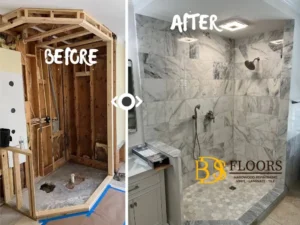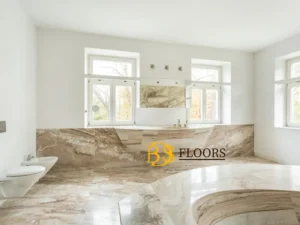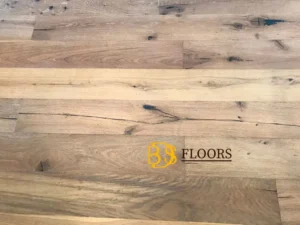If you find yourself in a situation where traditional flooring options like hardwood, tile, or carpeting won’t work, consider using a few coats of paint as a solution.
We initially planned to install solid wood flooring for our newly renovated attic, but it wasn’t feasible due to the unevenness of the floor, causing it to be wavy. We had to reconsider our options. We eliminated laminates since we were concerned about their tendency to feel spongy like floating floors. Although we looked into other materials, we ultimately decided on wall-to-wall carpeting as the most suitable solution.
Soon after beginning our search for carpeting, we discovered that it comes with a hefty price tag. While browsing through hundreds of samples, we evaluated factors such as weight, density, texture, color, backing, padding, and various types of fibers. The overwhelming diversity of options left us feeling puzzled. Additionally, it was difficult to accurately compare prices between different sellers since they had different pricing structures.
After considering various options, we ultimately chose to install an eco-friendly carpet made primarily from recycled plastic bottles in our attic. We were relieved that the carpet installation would be a simple and swift process after the arduous task of converting the attic. However, we were shocked to receive a quote of $2,000 for the carpet installation, which led us to abandon the idea of wall-to-wall carpeting altogether and explore alternatives. We ultimately decided to prime and paint the plywood floor, adding area rugs for comfort. The total cost was roughly $250, which included paintbrushes, rollers, wood putty, and other minor expenses. It is worth noting that we used high-quality plywood for the project, but if your plywood is in poor condition, it may be necessary to add a layer of 3/8-inch A-C plywood. If the space is likely to endure heavy wear and tear, hardwood plywood is recommended.
Begin by ensuring that the plywood flooring is securely attached to the joists below. Next, fill any nail holes or joints in the surface with patching compound. It is crucial to have adequate ventilation in the workspace, so consider setting up a fan in a window to ensure proper airflow.
Sand the plywood to your desired level of smoothness. If working on a larger area, renting a floor sander may be necessary, but for smaller projects, it may be more efficient and cost-effective to use a random-orbit sander equipped with 120-grit disks. Minimize dust by using a wet/dry vac in conjunction with the palm sander. To maintain a clean workspace, intermittently run the vacuum as you finish sanding each section of the floor surface.
Using a paint roller attached to an extension pole, apply two coats of primer to the plywood floor. There are many types of primer available, but I prefer pigmented shellac due to its quick drying time and ability to create a solid foundation for the top coat. Depending on the size or layout of the room, it may be necessary to prime one section of the floor at a time for convenience.
Painted Plywood Floors – Save Cleaning Time
For our plywood floor, we chose enamel paint in a satin finish. If you prefer a semi-gloss or glossy appearance, those types of paint are also suitable, but be sure to add a layer of water-based polyurethane for protection. A 12-inch roller will speed up the painting process, while a 3-inch brush is ideal for cutting in at corners. If you take a break during the painting process, wrap your tools in plastic to save time on cleaning.
When applying the paint to the plywood floor, make sure to do so evenly, as you would when painting a wall. Allow each coat to dry completely before applying the next one. When finishing off each section, use smoothing strokes that are rolled in the same direction before the paint dries. The roller should be moist, but not overloaded with paint.
After the final coat of paint has been applied, allow it to cure for several days before moving furniture onto the floor. In most climates, you can walk on the new floor in socks within a few hours, but be sure to allow ample time for the paint to fully cure.







